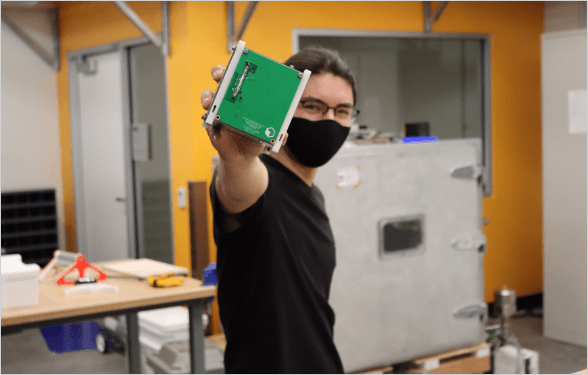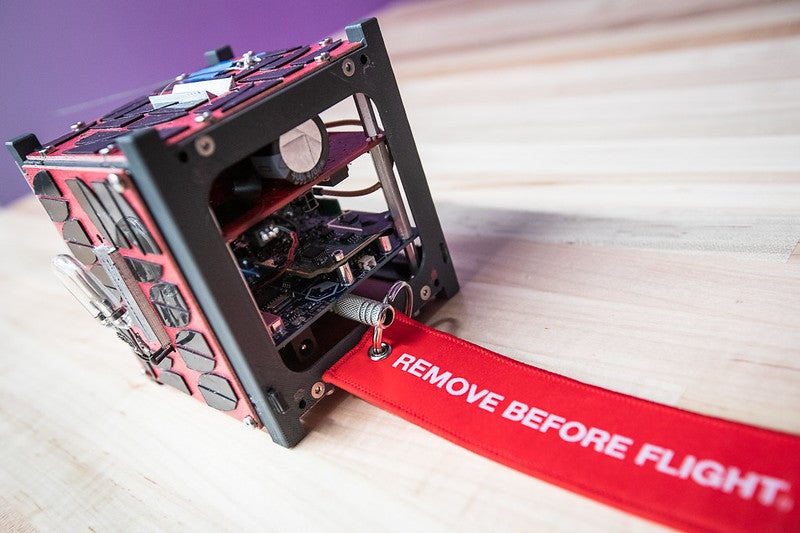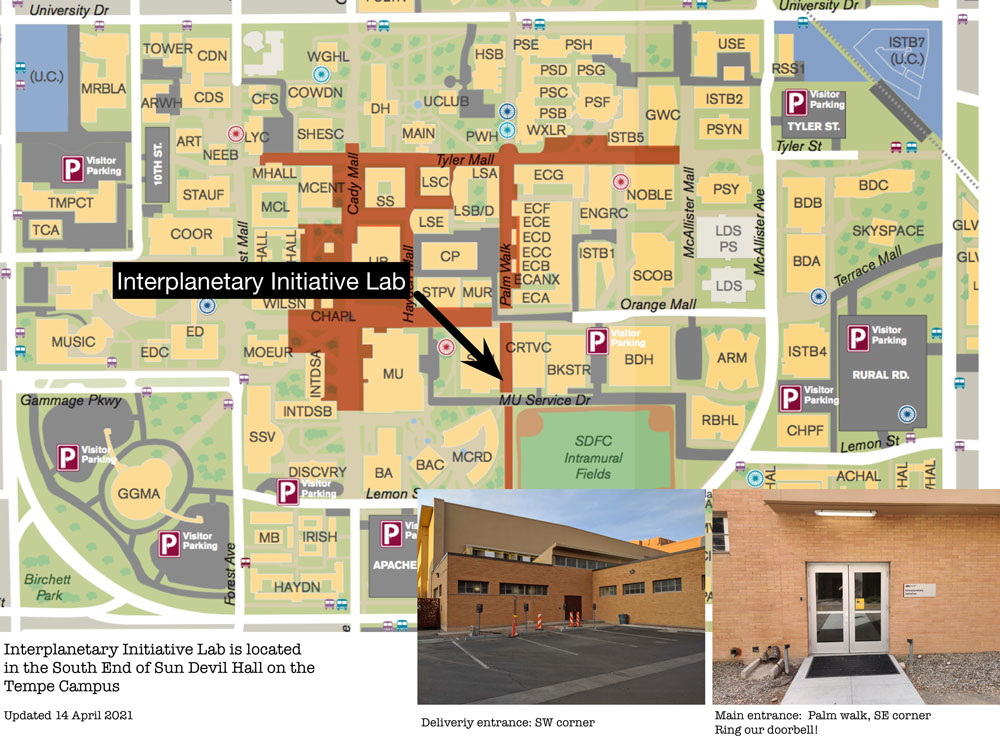Our attitude determination and control systems (ADCS), or pointing testbed, provides end-to-end ACS testing capability. It simulates the magnetic field and sun exposure of a satellite’s orbit. It also provides two degrees of near frictionless movement from an air-bearing table on which the test subject sits. With these three capabilities, a satellite can be run through an entire mission simulation for orienting, pointing, and critical component communication based on location.
Interplanetary Laboratory
The 6,800 square-foot Interplanetary Laboratory takes the makerspace approach and extends it to full lifecycle space-flight hardware and software development.
The Interplanetary Laboratory provides access to specialized equipment, expertise and secured lab space to enable groups to pursue projects that are otherwise out of reach due to limited resources. Projects come from groups as small as student clubs, to larger faculty research missions, and external corporate partner collaborations. Our personnel and processes are here to support the full life space-flight product life cycle including proposal, design, analysis, fabrication, integration, test and operation of space hardware and software that solve society’s urgent space challenges.

General capabilities
Open plan workspaces with state-of-the-art audio visual meeting equipment support group collaboration and out-of-the-box thinking. ESD benches with power and hand tools, 3D printers, soldering rework, oscilloscopes, power supplies, small computers, and more in a secured lab enable development of experimental electronics and structures that are too specialized for other labs to support. Our stock of small parts, up to embedded processors, are instantly available to keep your program on schedule. 24-hour access and a small kitchen allow for 24/7 testing campaigns.
Interested in a complete list of our larger equipment?
Explore the laboratory

Corporate partnerships
We form partnerships for research and development that drive innovation and benefit society. To learn more about our technical capabilities, please email iilab@asu.edu.
Students
We offer ASU students the opportunity for hands-on experience working with cutting-edge space-industry technology. We will help you chart your career, pursue your research aspirations and grow your network.

Where to find us
Tempe Campus
Sun Devil Hall
Main Entrance: Palm Walk
Delivery Entrance: Southwest corner (by arrangement or inquire at main entrance)